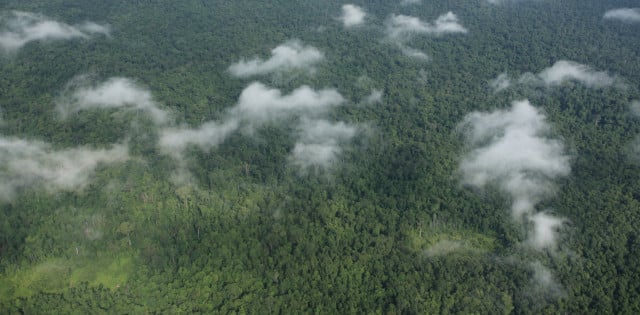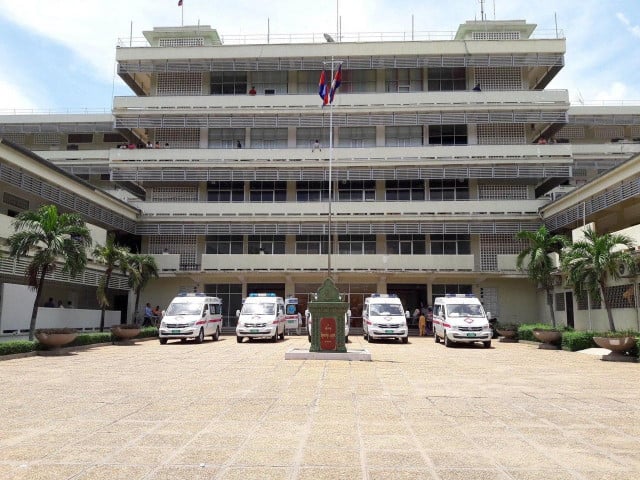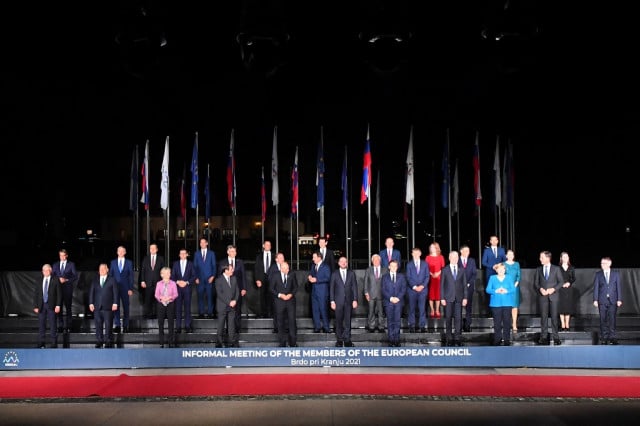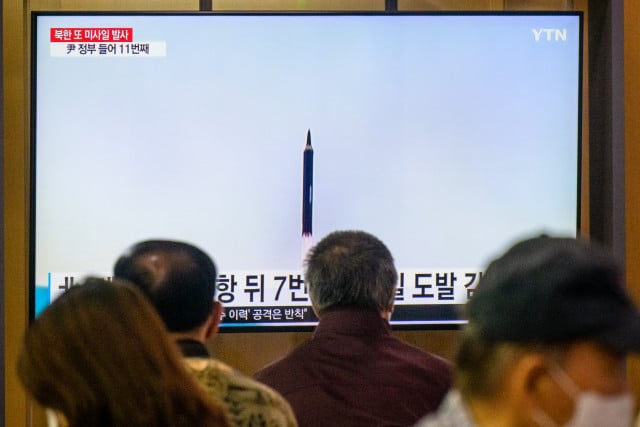Cambodia Targets Carbon Neutrality by 2050: What Next?

- By Sao Phal Niseiy
- January 5, 2022 6:44 PM
While Cambodia is among the first least developed countries to submit a carbon neutrality plan to the United Nations, concerns remain over the gap between policy and implementation
PHNOM PENH--Cambodia unveiled its long-term strategy to achieve carbon neutrality, becoming the third least developed country to set such ambitious plan after the government submitted the policy to the United Nations Framework Convention on Climate Change (UNFCCC) on December 30, 2021.
United Nations Development Programme (UNDP) Cambodia’s resident representative Alissar Chaker congratulated Cambodia on becoming the third least developed country and the first Southeast Asian nation to set such a specific target in reaching carbon neutral by 2050.
“This is a significant move. This is also consistent with the inclusion of climate change action as a priority in Cambodia’s economic recovery strategy, which was released last month by the Ministry of Economy and Finance, and with Cambodia’s priorities for ASEAN in 2022,” Chaker said.
Sou Socheath, who serves as executive director of Live & Learn Cambodia—an NGO focused on environmental sustainability, suggested that the government’s long-term strategy on carbon neutrality could demonstrate Cambodia’s climate commitment.
“As a local NGO working on fighting climate change, we really congratulate the Kingdom of Cambodia on submitting the strategy earlier than many others, which can be regarded as a role model,” Socheath said, adding that it could show that carbon neutrality targets are not just for wealthy countries.
Spokesperson at Ministry of Environment Neth Pheaktra said by submitting the policy, Cambodia remains highly committed to addressing the climate crisis under the Paris Climate Agreement, although the country makes trivial contributions to global greenhouse gas emissions.
“It is our international pride to be partaking in seeking solution to climate crisis by adopting the 2050 carbon neutrality target. The strategy showcases our rigorous commitment and political will in addressing this global crisis,” Pheaktra said.
The submission of long-term carbon neutral strategy came a year after the country presented its updated Nationally Determined Contribution (NDCs) to the UNFCCC in December 2020.
Prime minister Hun Sen also announced that the country was working on the strategy while addressing the Climate Ambition Summit co-hosted by the United Kingdom, the United Nations and France in December 2020.
As the effort to reduce greenhouse gas emissions, the country also announced that it wouldn’t approve new investment coal power projects while stressing that it would look to other low carbon sources such as LNG or hydrogen, as well as encourage more investment in clean energy such as solar, but multiple coal plants that were already planned are still going ahead.
According to Our World in Data, Cambodia emits roughly 143 million tons of carbon dioxide from fossil fuels and cement production, although this does not account for land use change, such as clearing forests.
At the 26th United Nations Climate Conference (COP26) in Glasgow, the country didn’t sign up for the declaration on Forests and Land Use, which would have been a pivotal step to enable a restoration of the “lungs of the world” by 2030. This also invited criticism from environmental observers as it signals that the country still lacks political will to fight against deforestation and live up to its pledges under Paris Climate Accord to maintain 60 percent of forest cover by 2030.
Key Priorities
Pheaktra said that comprehensive analysis led to the carbon neutrality strategy, which also takes into account different scenarios for various economic sectors.
“Furthermore, it also includes the balance between emission reduction and economic development, social justice and climate resilience,” he said.
To achieve this target, Pheaktra said the government will focus on three key steps: implementing REDD+ forest protection schemes that allow the government to sell carbon credits in return for not logging forests; reducing emissions from both the energy and transport sectors; and bringing Cambodia’s energy efficiency up to speed with best practices, particularly in agriculture, industry and waste management.
The UNDP’s Chaker praised the government’s targeting of specific sectors, adding that this could provide a long-term framework to guide policy in the future.
“It will also allow Cambodia to honor its international commitments through the achievement of the emissions reduction and climate change adaptation targets set in its NDCs and to access climate finance for this purpose,” she continued.
More importantly, Chaker said she hoped that the transition to a zero-emissions economy will spur more innovation and new jobs which could contribute to poverty reduction and sustainable development.
“It will improve living standards through reduced air pollution, cheaper energy bills, higher-quality homes, more flexible mobility services, and more durable consumer goods,” she added.
Whether Cambodia can curb the corruption that has fueled industrial-scale illegal logging operations and helped push coal-fired power projects ahead of renewables remains to be seen, but Pheaktra of the Environment Ministry said that the challenges are mostly rooted in a lack of finance, technological and human capacity.
Echoing Environment Minister Say Samal at COP26, Pheaktra said that Cambodia simply needed more money from international donors to preserve its natural resources.
“We call upon developed countries to fulfil and increase their pledges in climate finance and also deliver actual results. Cambodia has been prepared to join hands in accomplishing this global ambition,” Pheaktra said.
Mix of Hope and Skepticism
Moeu Chandara, project coordinator at Cambodian Youth Network’s Natural Resources program, regarded the carbon neutrality policy as a positive move from the government, but while he said it was right to prioritize forestry reform, he remains concerned over the lack of transparency.
“We hope that this new strategy will contribute to our ongoing forest protection efforts and eventually assist us in delivering our climate pledges. But, of course, there needs to be transparency, fairness, effectiveness and integrity in our implementation process,” Chandara said, adding that there were no transparent consultations for the public in the policy’s development.
“There is still a lack of contributions from the public and relevant stakeholders when it comes to producing this strategy. It means those who will benefit from these kinds of frameworks have not been given opportunities to provide inputs. Therefore, they can fall victim or can’t fully reap benefits as they deserve to,” Chandara explained.
He also went on to suggest that while it is encouraging to develop a new strategy, there necessitates that the government revisits the existing strategies and regulations, particularly those related to natural resources and forest protection to find out the constraints and attainments.
“If those are effective, how effective they are? If not, we need to find out why? Or what we should do more to warrant effectiveness,” he added.
Ham Oudam, an environmental analyst, agreed the sectors listed under the strategy by the government are the main contributing factors to greenhouse gas emissions, but said he remains skeptical of how the policy will be implemented and of Cambodia’s enduring reliance on foreign assistance to address climate change.
“If the government wants to be more independent in leading this kind of work, we need to find a way to do it ourselves as well as dare to have our own investments,” Oudam said, adding the space for investment in the energy, agricultural and industry sectors still remain minimal.
He noted the incentives to encourage factory owners to switch to renewable sources have been limited, but said it could be an indication that Cambodia is able to catch-up to the rest of the world by using solar and battery technology as backups.
“It is vital to encourage more people to turn to solar energy and become a supplier to the national energy grid. At least they can take part and become more active,” he continued. “Some communities have already been taking the lead in energy production innovation as they have their own strategies in terms of producing electricity and have become self-sufficient.”
Oudam agreed that the changes in practices will contribute significantly to greenhouse gas reduction, but more assistance should also be given to small scale farmers.
“For example, the conventional agricultural practices and community-based agricultural works have a critical role in addressing climate change,” he said. “So, if we talk about the agricultural practices, we need to focus on small-scale farmers. How much we have supported them now as we observe that large-scale farmers continue to lead this sector.”
Tracking Implementation is Critical
While the carbon neutrality policy is seen as a positive step forwards, implementation is the key concern and for Socheath of Live & Learn Cambodia, the policy needs to align with existing development plans.
“The government and development partners shall make themselves available to open and transparent dialogues in a joint monitoring and evaluation process on the strategy implementation,” Socheath said. “It is critical that the government can carry out frequent reviews of the achievements of implementation of the strategy with transparency and openness so that the public can offer feedback and comments.”
Oudam concurred that more focus is needed on how the policy will be implemented and pointed to the government’s pledges on carbon credits and REDD+ projects which have been undermined by large-scale logging and land-use change.
“We continue to see the issues like deforestation driven by large-scale economic land concessions near Prey Lang Wildlife Sanctuary and Botum Sakor National Park. Then the question is whether there is an increase or decrease in illegal loggings if we are going achieve forest protection,” Oudam said.
Chandara of Cambodia Youth Network agreed that land concessions and logging are a threat, “especially in Prey Lang,” and he remains concerned about the gap between policy and practice.
“If this persists, this strategy [carbon neutrality] can’t be effective and helps us ultimately reach the goal of going carbon neutral,” he said.
For activists like Chandara, concerns go beyond the implementation process when it comes to tackling forest crimes and putting an end to deforestation—instead, he said, he wants more space for local communities and civil society to participate in environmental conservation.
Furthermore, he suggested that the government bolsters the ability and capacity in law enforcement dealing with forest crimes.
“Degraded forest doesn’t take much time to recover if we can put in place proper and robust law enforcement mechanisms,” he added.
The UNDP’s Chaker also agreed that there is a need not only to ensure effectiveness but also to identify issues and address them quickly, saying that the UNDP—with funding from the United Kingdom—will support the Environment Ministry monitor the policy’s progress.
“The strategy includes a broad range of measures, some related actions are already ongoing, while others are still at an early stage,” she noted, adding that energy efficiency and sustainable mobility are emerging policy issues in Cambodia. “Decisive action will be required in the coming years to put the country on track for this carbon neutrality objective.”
She also emphasized the importance of forestry sector reform—which includes protection against deforestation and the need to adopt sustainable forestry. Doing so, she stressed, will allow the forests to fully function as carbon sinks for Cambodia.
“Climate finance and technical assistance are increasingly accessible, and we are also working with the government on accessing carbon markets to finance this transition,” she said.















